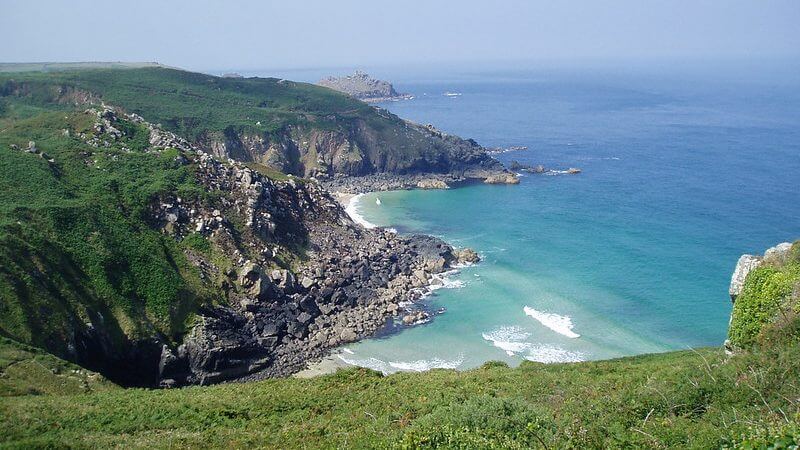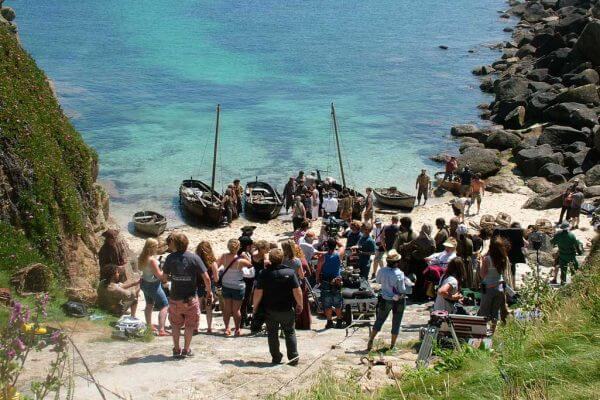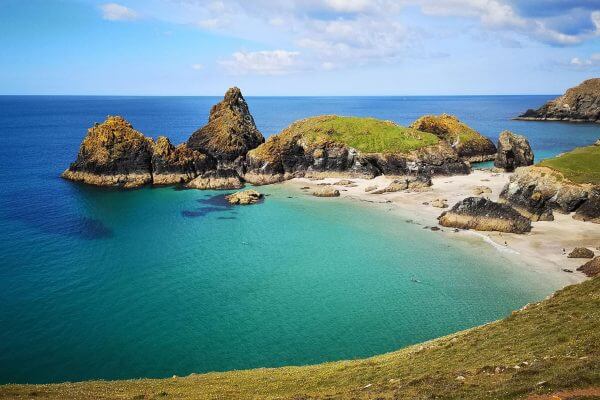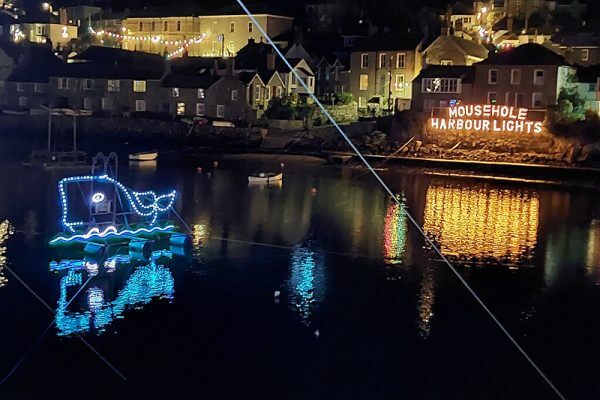Coast Walking 1: From Zennor to St Ives

A journey through natural beauty & legend—a walk from Zennor to St Ives

Time spent in Cornwall isn’t complete without at least one coast walk!
In fact, it’s so central to the Cornish experience that we’re compiling a series of coast walk blogs. Through these posts, we aim to share some of our favourite routes in the county. Welcome to the very first of that series!
The walk from Zennor to St Ives is a particularly memorable one. Not only does it have incredible views of the North Coast but the route itself is steeped in history and legend.
Before we get underway with talking about this special journey, let’s give you some background on the South West Coast Path…






The South West Coast Path is a beautiful, powerful natural resource. I walked the 630 miles of this wild coastline myself, spent months with the call of the gulls and the endless horizon of the sea always to one side, and it changed my life.
Raynor Winn, author of The Salt Path
About the South West Coast Path
Did you know…?
- The South West Coast Path is England’s longest nature trail.
- It has 115,000 feet of ascent and descent. That means that if you walked the whole thing, it’d be the same as scaling Mount Everest four times!
- The whole path is more than 1,000 kilometres long. Completing it involves crossing 230 bridges, catching 13 ferries, opening (and closing!) 880 gates, climbing over 436 stiles, passing over 4,000 Coast Path signs and going up or down over 30,000 steps.
- Around 71% of the Path is in either a National Park or an Area of Outstanding Natural Beauty. The also passes through 2 World Heritage Sites, a UNESCO Biosphere and a UNESCO Geopark.


Coast Path walks with us…
We love adapting our programmes around the requests we receive from our students!
If you want extra coast walking, we would love to take you on some bonus walks while you are here, just let us know when you book – or we can talk about it when you are here in Cornwall 🙂
- On our Junior Summer School, we aim for at least one coast walk per week. We usually combine our coast walks for Juniors with our trip to the Minack Theatre or as part of our Beach Cleans.
- For adults on our Family Summer School, there is the chance to do one or two extra coast walks while the kids are enjoying surfing or other water sports (though we know some adults prefer to do the water sports with their kids which is fine too!)
- For those adults who join us for a Language Experience, there are opportunities to do three or more coast walks per week.
- We also offer a special Coast Walk Experience. Every day, we will take you for a different walk on the coast path. At the end of each walk we will finish in local pub for a delicious pub supper.
With such a huge section of the British coastline represented by the South West Coast Path, there are so many different types of walk to choose from. And that’s why our journeys along it are so unique and memorable experience for our students.
So, let us tell you about the Zennor to St Ives coast walk…
The route from Zennor to St Ives
The coastline between Zennor and St Ives is part of Cornwall’s Area of Outstanding Natural Beauty. It’s clear to see why this segment of the coast is deemed as such. It’s also a relief to know that, thanks to this title, these areas are protected by the government.
The walk itself is reasonably demanding but well worth it! Most of the challenge comes from rocks that need scrambling over and it is a little steep in parts. That said, as with any of our coast walks, we always make plenty of stops so that everyone can soak up the views and take lots of pictures.
The stretch of coast path between Zennor and St Ives is around 10 kilometres. A road with a regular bus route runs between St Ives and Zennor, as well as a shorter inland path—called the Tinner’s Way.
Depending on whether we simply walk along the coast or do the whole loop, the walk takes us somewhere between 2-4 hours. Maybe a little longer, if we fancy a pub lunch or picnic along the way!

Primroses and violets are out, and the gorse is lovely. At Zennor one sees infinite Atlantic, all peacock-mingled colours, and the gorse is sunshine itself, already.
D. H. Lawrence

Art and Literature in Zennor
Zennor is a quintessential Cornish coastal village. With only 200 inhabitants, it’s surprising to note that this small place has a rich and varied history.
For one thing, the village has an impressive literary background. Not only has it served as the setting for a multitude of novels and stories but it was also home to renowned modernist writer, D. H. Lawrence.
Lawrence was a fascinating and controversial figure. He published all four of his most famous novels—Sons and Lovers, The Rainbow, Women in Love, and Lady Chatterley’s Lover—at the start of the 20th Century. All of these works were the subject of public outrage because of their depictions of romance and use of explicit language.
Though during his lifetime Lawrence was heavily scrutinised and often censored, these days he’s considered a significant voice in the modernist avant-garde movement. His time in Zennor even became the subject matter for Helen Dunmore’s award-winning debut book – Zennor in Darkness.
Zennor’s Stone Age monuments, historic pub & ancient church
Zennor is also the site of multiple historical landmarks. Just above the village lies a windswept moor, which is home to the Zennor and Sperris Quoits—fascinating stone tombs of prehistoric origin. From the late Stone Age through to early Bronze Age, the Cornish landscape hosted a great deal of activity. This is marked by the multitude of Neolithic monuments the county has, nestled amongst its rocky headlands. Today they stand as powerful reminders of Cornwall’s ancient origins.
Even the village’s only pub, The Tinners Arms, is steeped in Cornish history. Built in 1271, the pub has remained a community favourite for over 700 years. To this day, it serves up fantastic locally-sourced grub! With its log fires and cosy rooms, it’s a lovely place to grab a bite or try some local ale before we set off on our adventure.
Another must-see spot in Zennor is St Senara’s Church. Just along from The Tinners Arms, this ancient church has a history reaching back over 1,400 years.
As we approach the church, students will spot a memorial to John Davy, who died in 1891. John Davy was the last surviving native speaker of the Cornish language. After him, sadly, the language was lost. That said, today the county is engaged in attempts to rekindle its linguistic heritage. Students will see the marks of this unique language in many places—from its signposts to its public transport, and even in the cinemas, thanks to the efforts of local art collectives!
Once inside the church, we can soak up its impressive stained glass windows and curved ceiling beams. However, the church’s main point of interest is undoubtedly its Mermaid Chair and the legend behind it…


The Mermaid of Zennor
Even with its literary connections and historic landmarks, the most famous thing that draws visitors to Zennor is its mermaid legend.
The story originates in the medieval period, around 500 years ago, when a mysterious woman began attending services at St Senara’s Church. Every time she visited, churchgoers’ heads would turn. Her stunning beauty and otherworldly appearance captivated all who saw her, but none as much as a young man called Mathew Trewella. The woman, in turn, was enraptured by Mathew, as he possessed the most impressive singing voice of the congregation.
One day, after the service, the woman signalled to Mathew to follow her. The pair headed towards the coast and were never seen again. Over time, people shared stories of the woman. The villagers suspected she was a mermaid, who had lured the boy to her underwater world. Locals often stared at the sea, wondering what became of Mathew.
A unique part of this legend is its tangible connection to Zennor and St Senara’s Church. Students can see the Mermaid Chair—believed to date back to the 15th Century—for themselves. In the Chair’s intricate carvings, they’ll find a mermaid holding a mirror and a comb. There’s even evidence to suggest that Mathew Trewella really existed.
Who knows where reality ends and fiction begins with this story, but the legend of the mermaid endures and captivates all who visit Zennor. If you listen closely on the coast walk, can you hear Mathew’s voice singing beneath the waves?
Our journey along the coast
With The Tinners Arms, St Senara’s Church, and Zennor’s ancient Quoits behind us, we’re ready to set out on our walk along the coast path.
This rugged 10 kilometre stretch promises breathtaking natural scenery, historical landmarks, and encounters with Cornish wildlife.
Here’s what to expect along the way:
- The rugged coastline between Zennor and St Ives
Known for its striking cliffs, jagged rock formations, and sweeping sea views, this section of the South West Coast Path highlights the untamed beauty of the North Cornwall coast. - Panoramic views from Zennor Head
As you approach the headland, prepare for panoramic views stretching across the Atlantic. Here we pause to take in the ocean breeze, and perhaps catch sight of local wildlife.




- Seal Island & marine wildlife hotspots
On a clear day, we can spot the aptly named Seal Island. Here, and on many other coves along the route, grey seals bask and play amongst the rocks. We also get a chance to see an array of seabirds, such as gannets, jackdaws, and—if you’re really lucky—a chough. These red-billed birds (whose name rhymes with enough) are the national bird of Cornwall. Choughs were once at threat of extinction in the county. Today, thanks to excellent conservation efforts, the population has grown impressively and can often be spotted on this part of the coastline. - Blooming flowers in July & August
During our summer school months, we’re lucky to see this landscape burst into colour. The path in late summer is lined with carpets of purple heather, yellow gorse, wild daisies and foxgloves. All these flowers are native to Cornwall and are a striking part of the county’s landscape. - The Merry Harvesters stone circle
A hidden gem on the route is an ancient stone that sits a little inland from the coast path. Much like its many Neolithic landmarks, the meaning of these stone circles have been lost over the centuries. Sites like these act as a reminder of Cornwall’s mysterious past.
As the walk comes to an end, St Ives comes into view and our adventure continues…


Finishing up in St Ives
St Ives has so much to offer: natural beauty, history, culture, surfing, amazing food… the list goes on and on!
We approach via the beautiful beaches of Porthgwidden, Carrick Du, and Porthmeor. Here students can stop for a swim, or just enjoy a quiet moment on the shore. Then, we wander through its historic harbour. St Ives’ maritime history echoes through its quaint, cobbled streets and fishermen’s cottages. Amongst these picturesque buildings, there are dozens of excellent local shops, perfect for souvenir and gift shopping!
For those interested in art, visiting the Tate St Ives, Barbara Hepworth’s Museum & Sculpture Garden, and the town’s many independent galleries is a must!
Brimming with these fantastic offerings, St Ives has so much to offer all of our students, regardless of their ages or interests. It’s clear to see why this town has been a source of inspiration for artists and visitors alike. This makes it the perfect way to wrap up a beautiful Cornish day!









